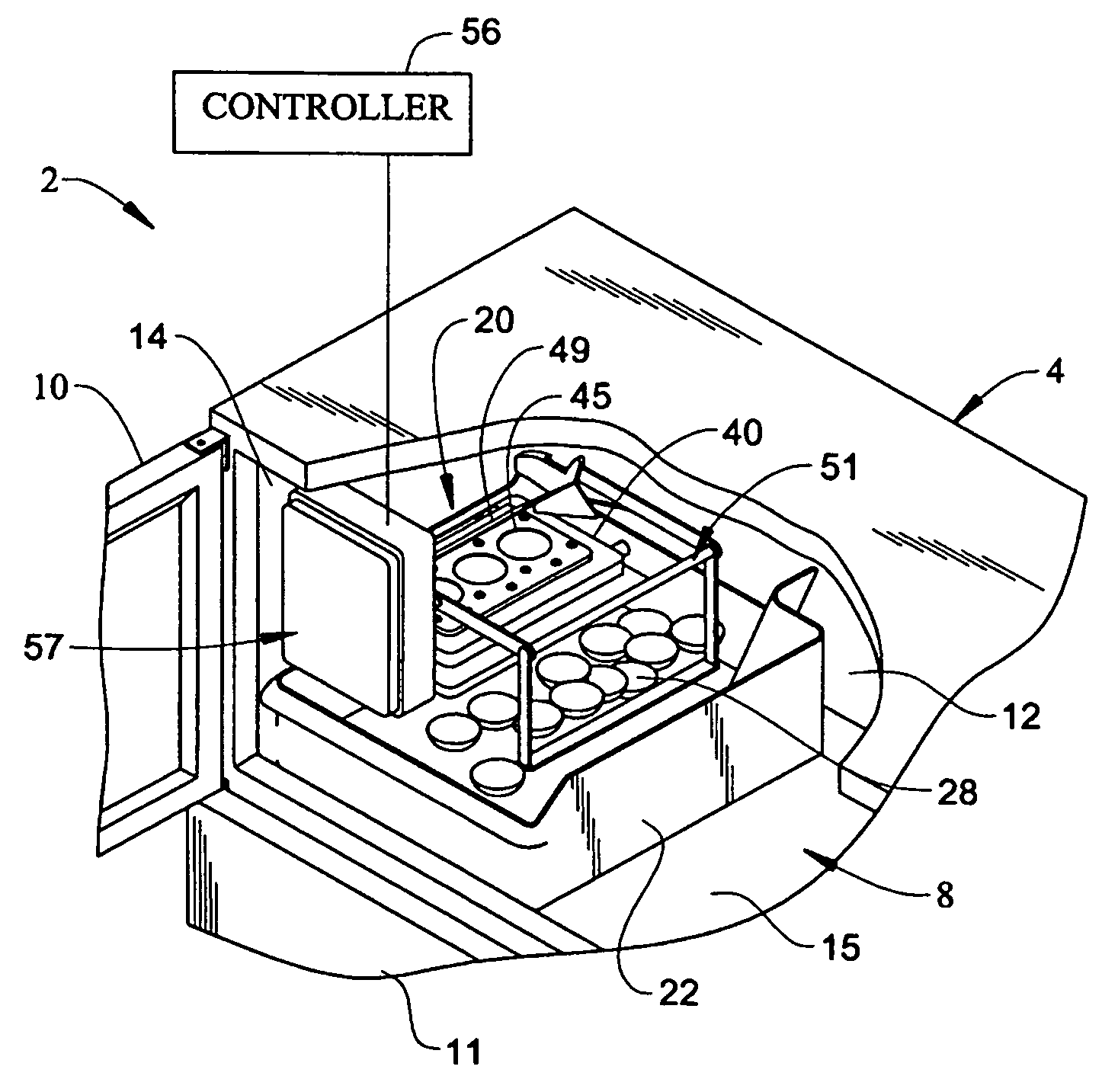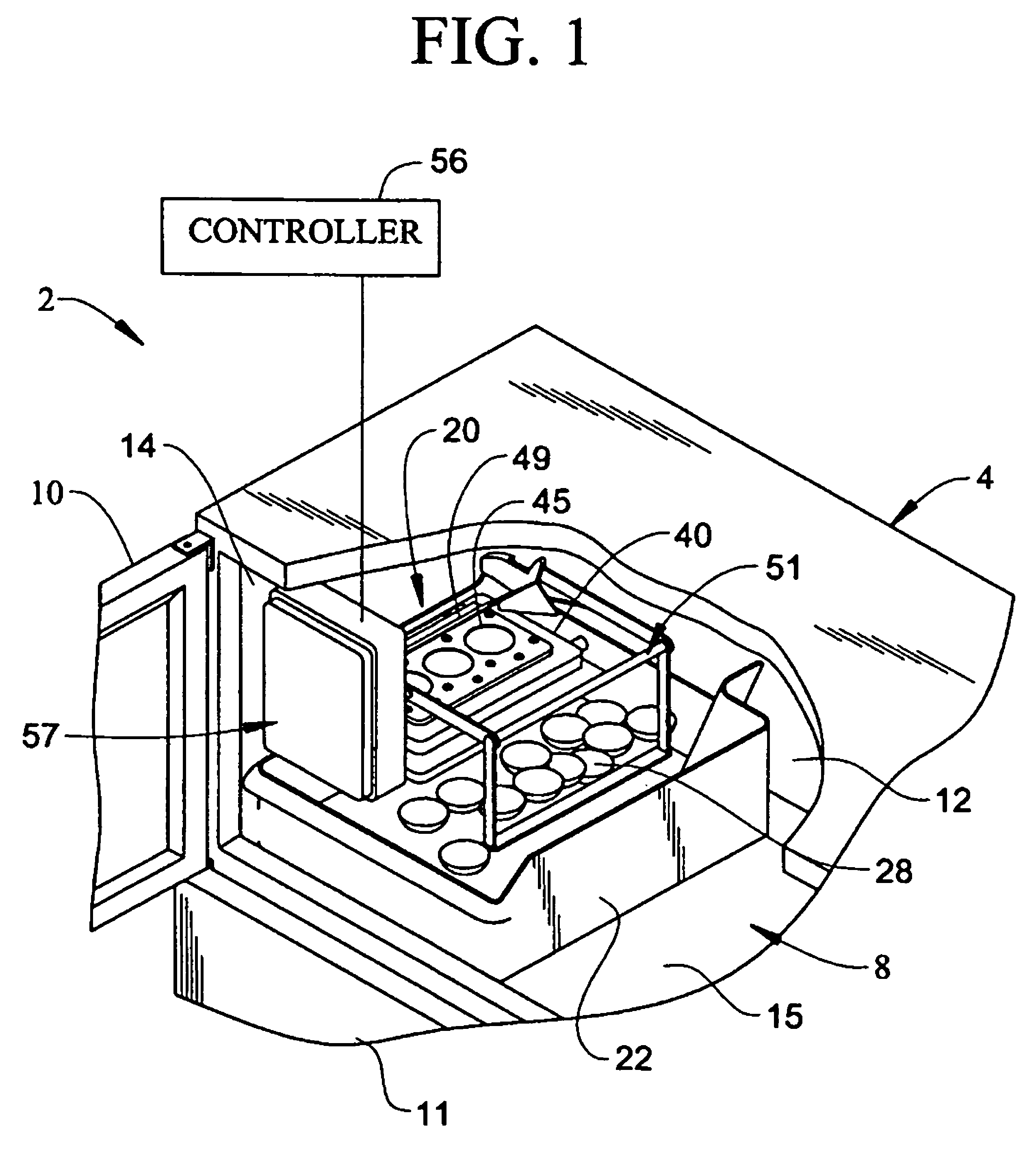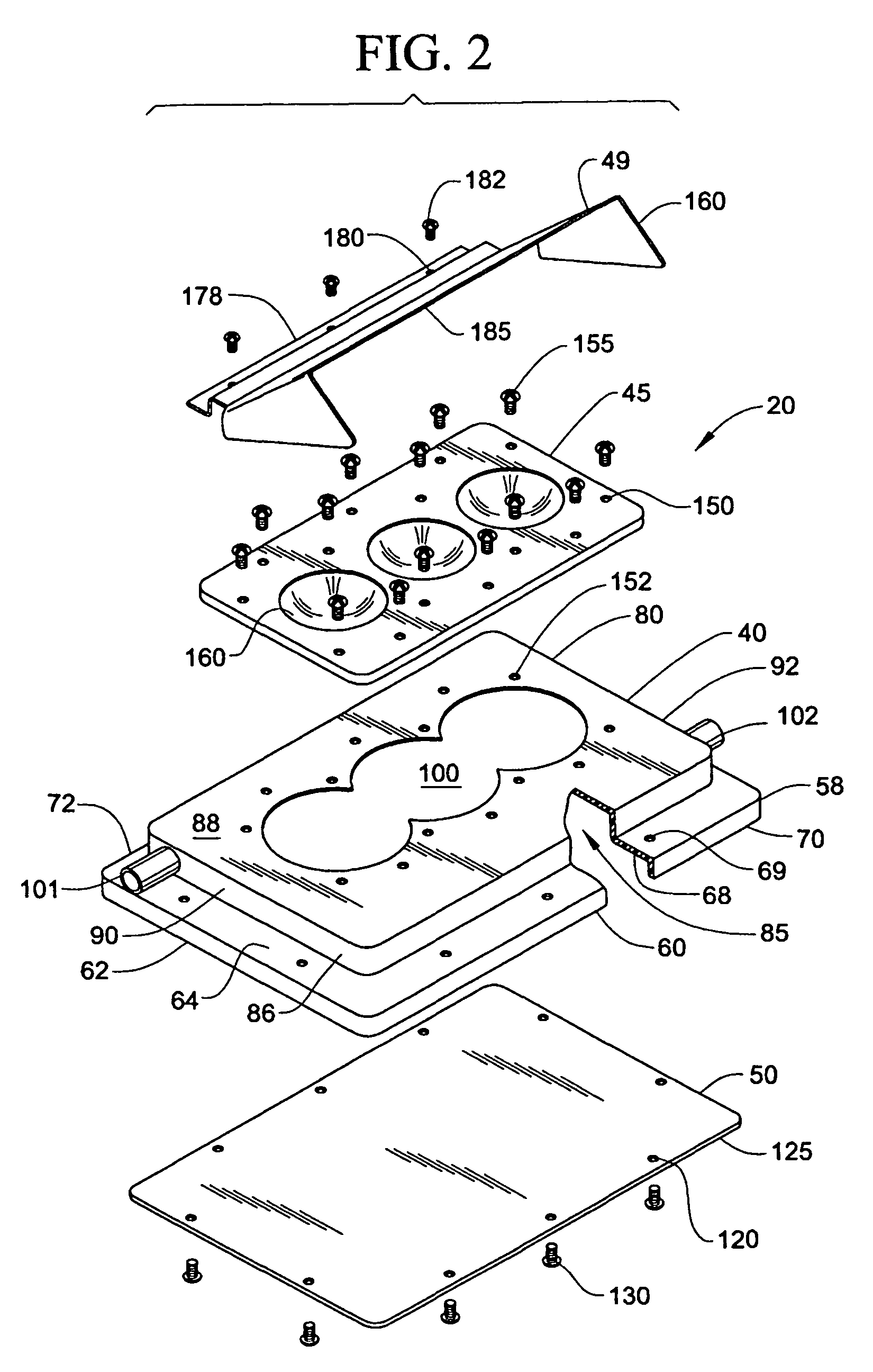Refrigerator with an automatic compact fluid operated icemaker
a compact fluid and refrigerator technology, applied in the field of refrigerators, can solve the problems of increasing the occurrence and severity of freezer burn, increasing the migration of sugar within products, and undesirable resistance wire approaches
- Summary
- Abstract
- Description
- Claims
- Application Information
AI Technical Summary
Benefits of technology
Problems solved by technology
Method used
Image
Examples
Embodiment Construction
[0021]With initial reference to FIG. 1, a refrigerator, generally indicated at 2, includes a cabinet 4 having arranged therein a freezer compartment 8 which can be selectively accessed through the pivoting of a freezer door 10. Also provided is a fresh food door 11 which enables access to a fresh food compartment (not separately labeled). As shown, the refrigerator 2 constitutes a top mount style unit. However, as will become more fully evident below, the present invention is equally applicable to various other types of refrigerators, including side-by-side style units, bottom mount units and French door units.
[0022]The freezer compartment 8, as depicted in FIG. 1, shows a back wall 12, a side wall 14 and a bottom wall 15. An automatic compact icemaker 20 is located within the freezer compartment 8 and is preferably mounted to the side wall 14 of the freezer compartment 8. An ice cube bin 22 rests on the bottom wall 15 of the freezer compartment 8 and is located beneath the icemaker...
PUM
 Login to View More
Login to View More Abstract
Description
Claims
Application Information
 Login to View More
Login to View More - R&D
- Intellectual Property
- Life Sciences
- Materials
- Tech Scout
- Unparalleled Data Quality
- Higher Quality Content
- 60% Fewer Hallucinations
Browse by: Latest US Patents, China's latest patents, Technical Efficacy Thesaurus, Application Domain, Technology Topic, Popular Technical Reports.
© 2025 PatSnap. All rights reserved.Legal|Privacy policy|Modern Slavery Act Transparency Statement|Sitemap|About US| Contact US: help@patsnap.com



